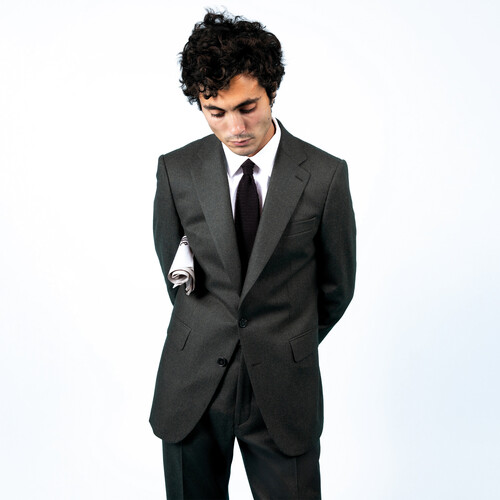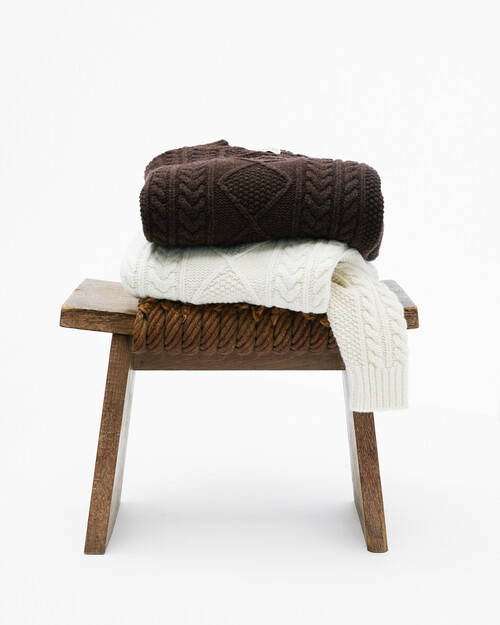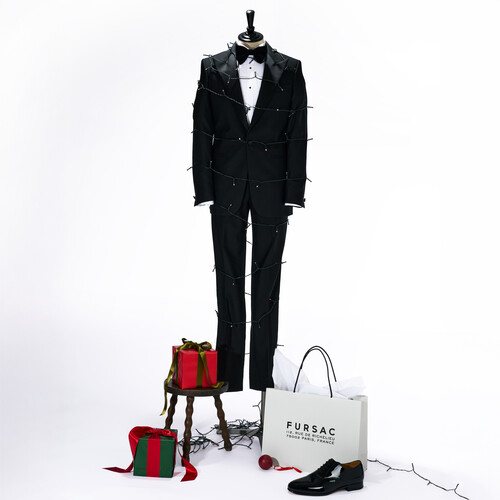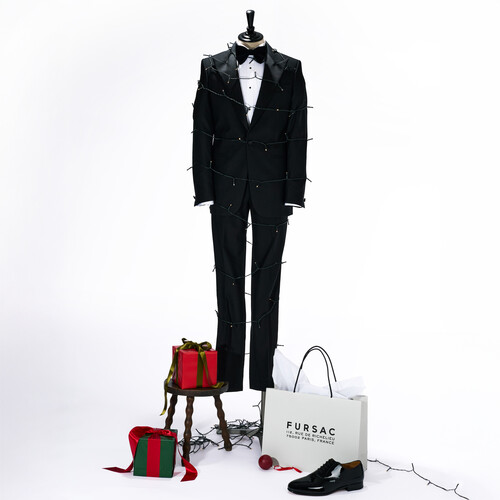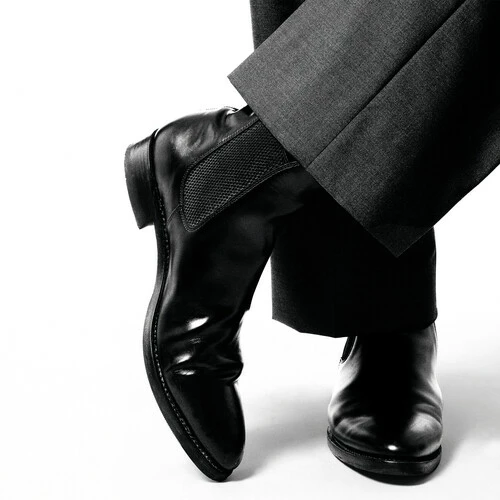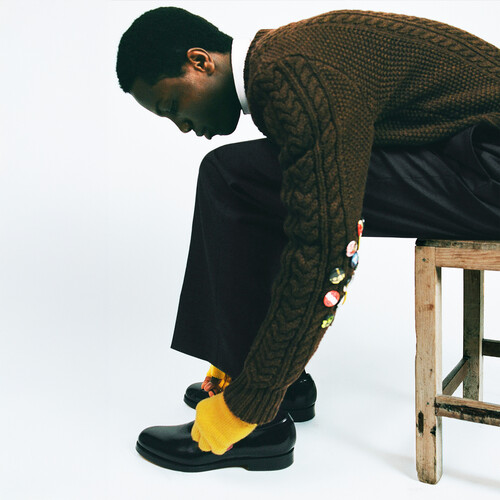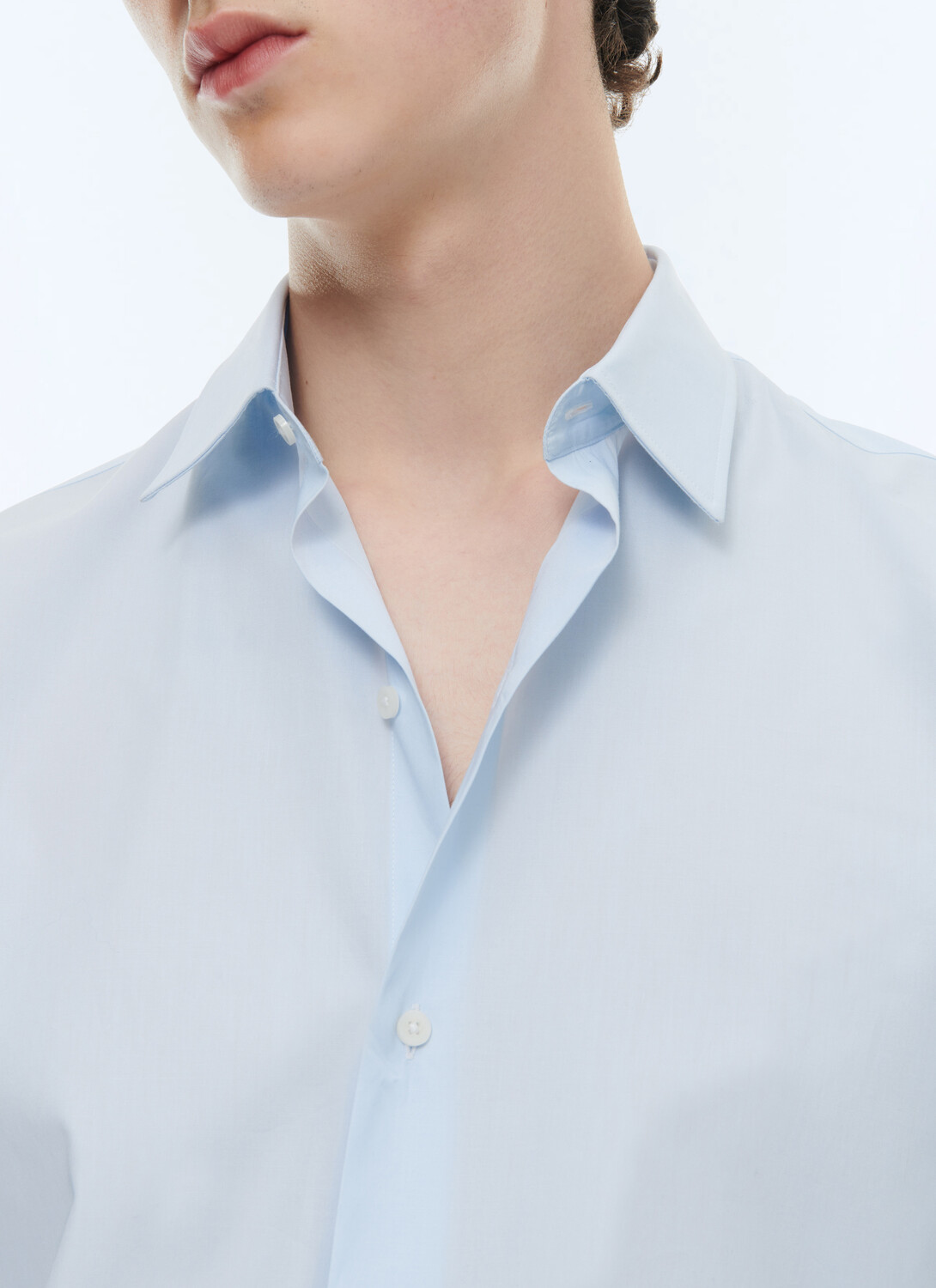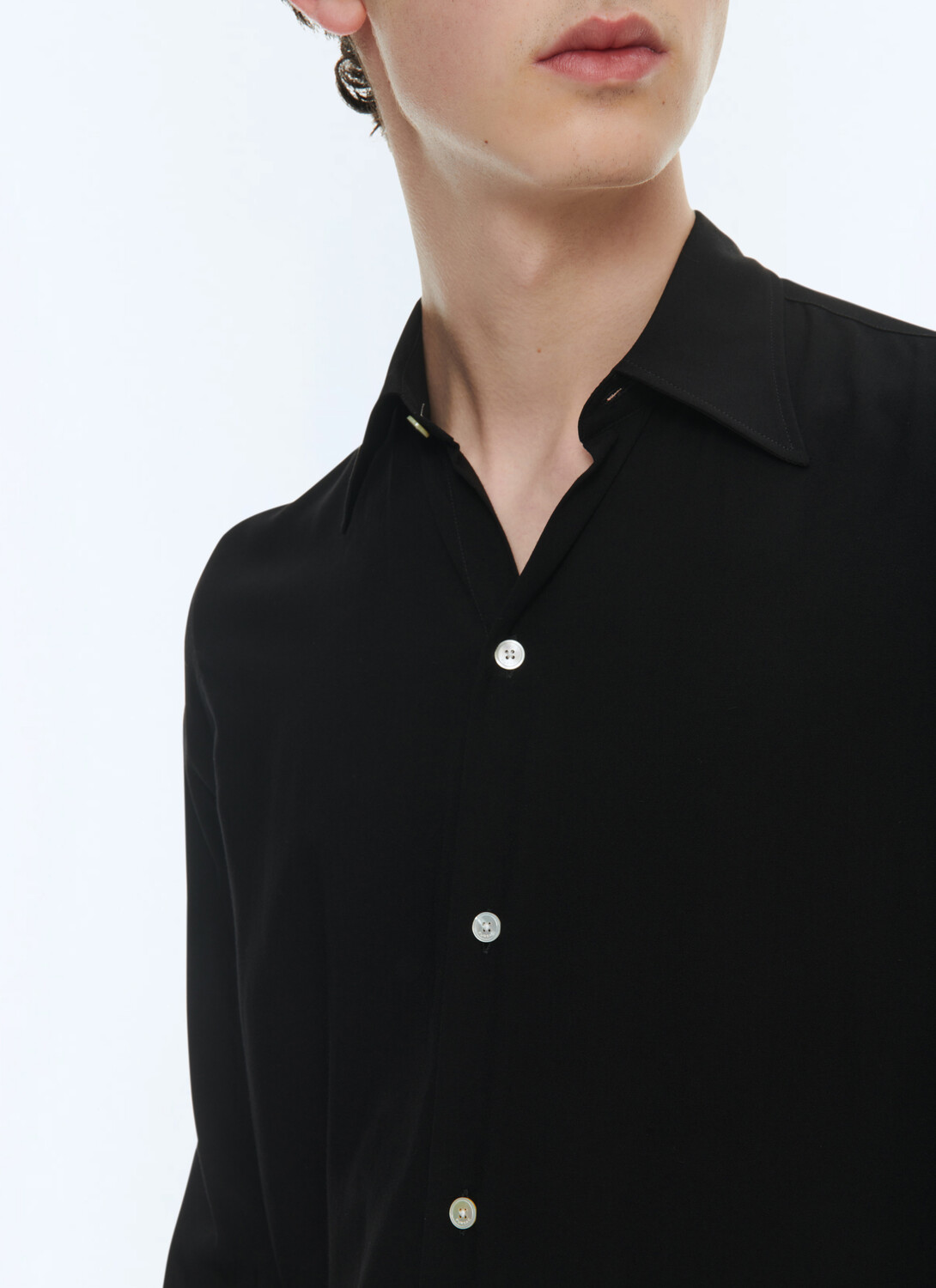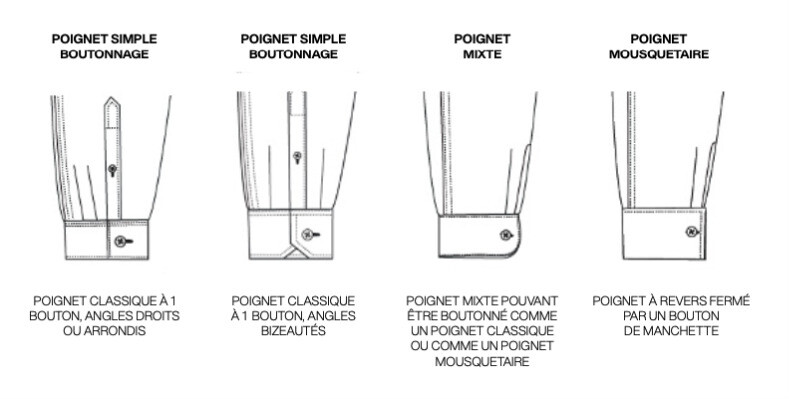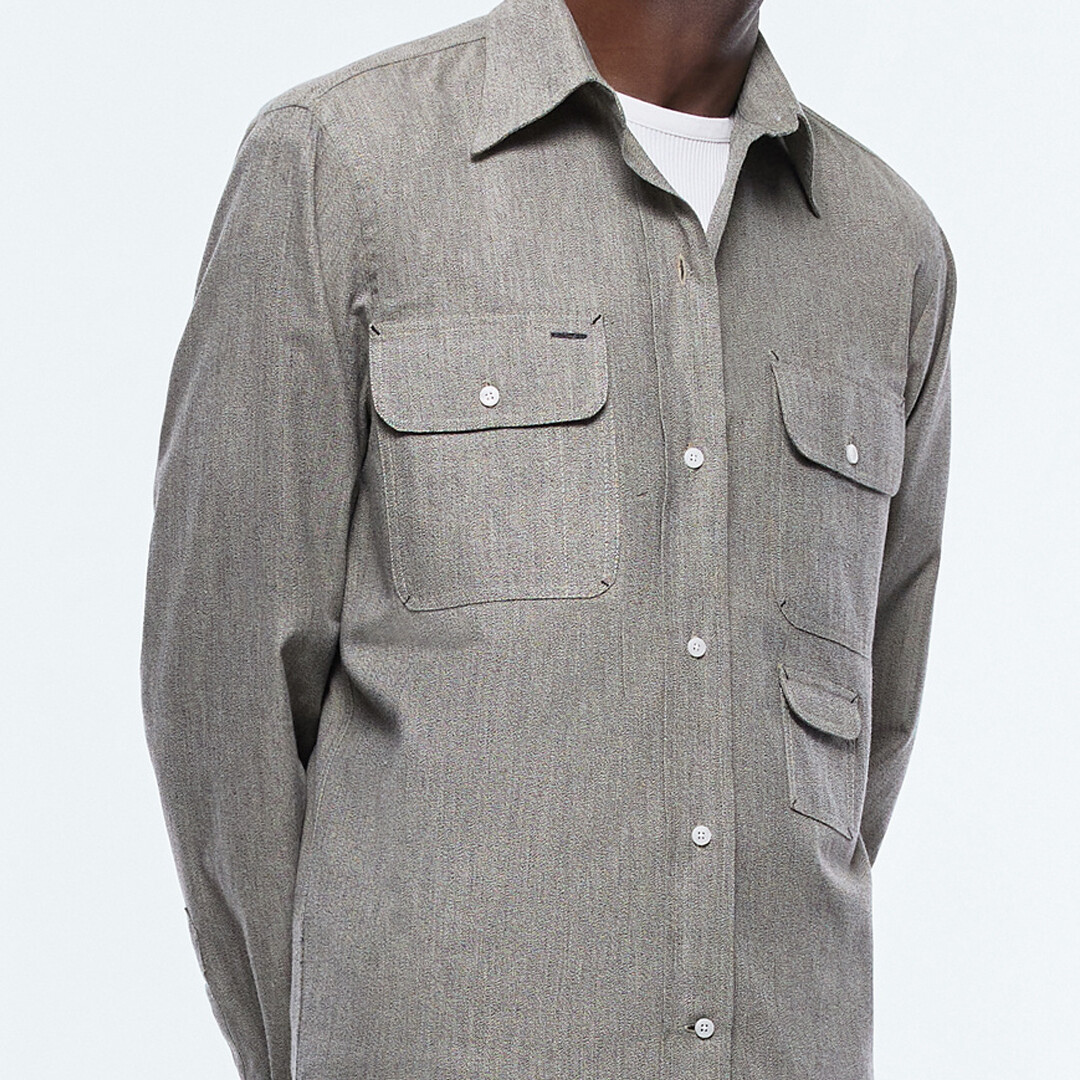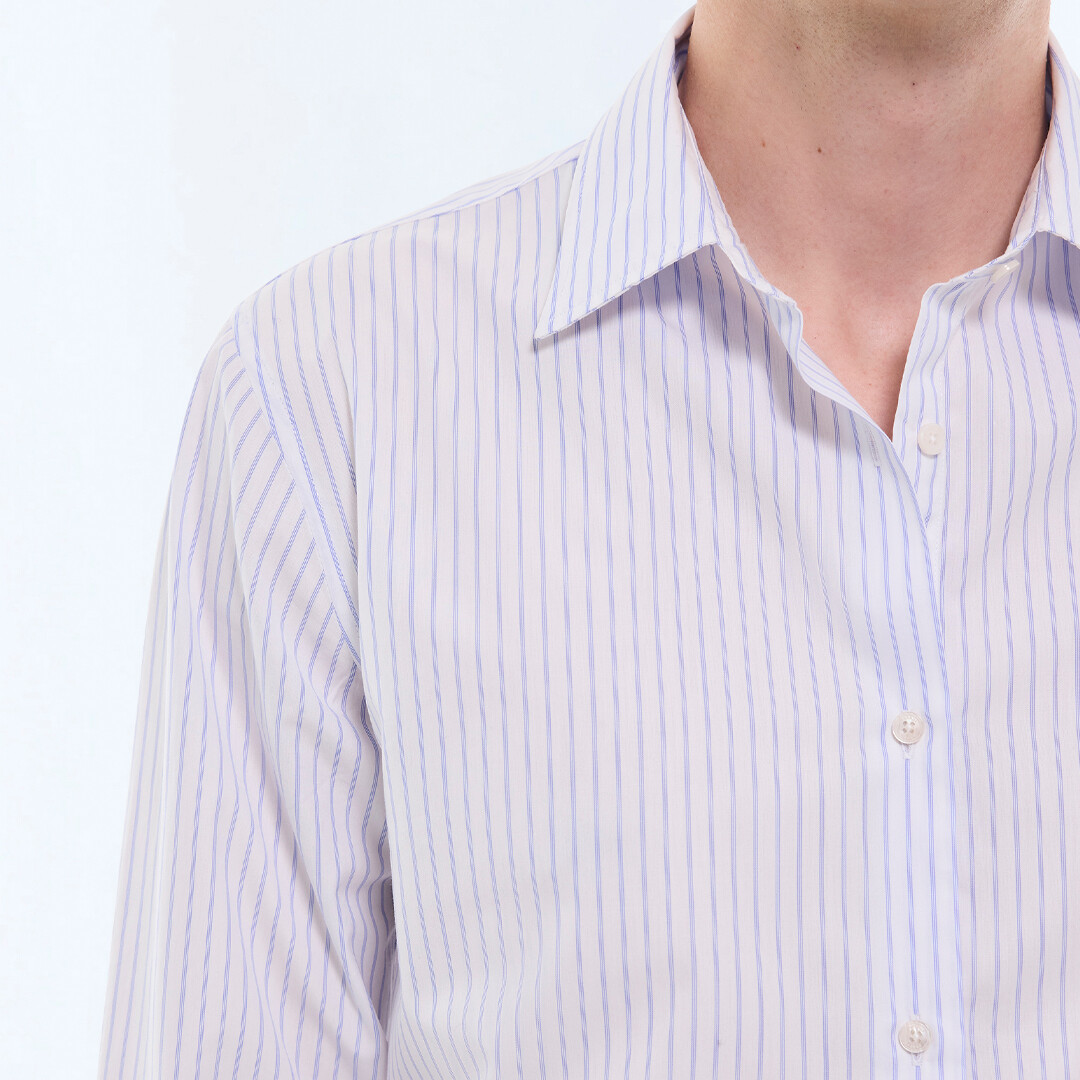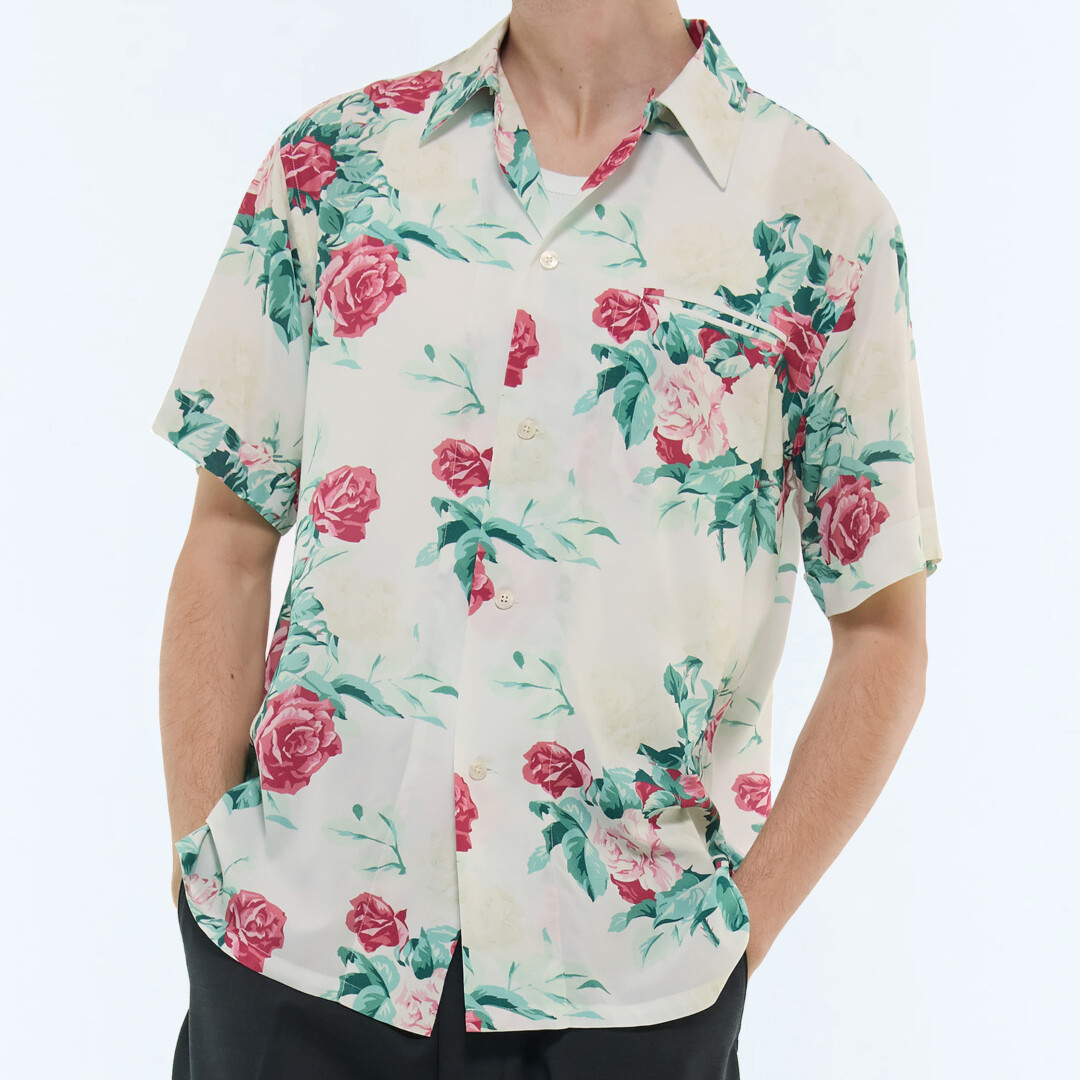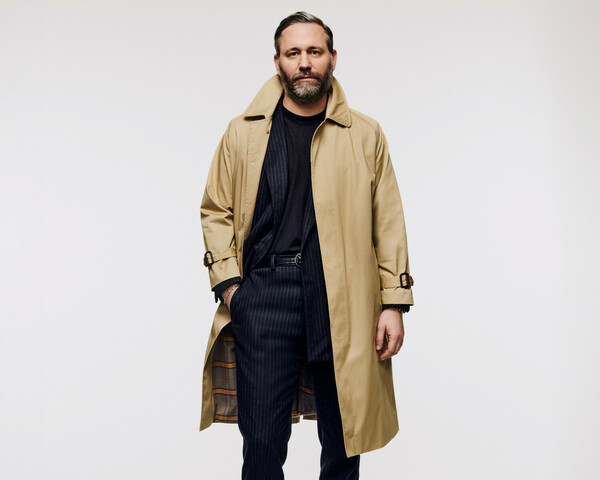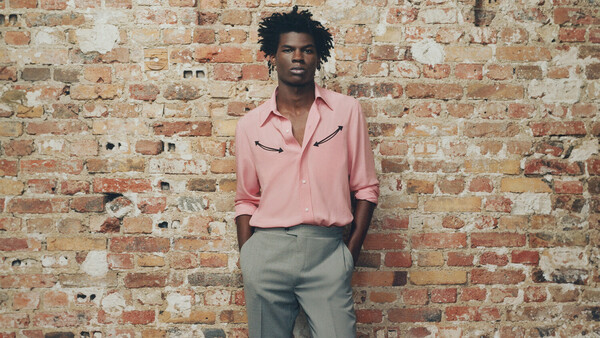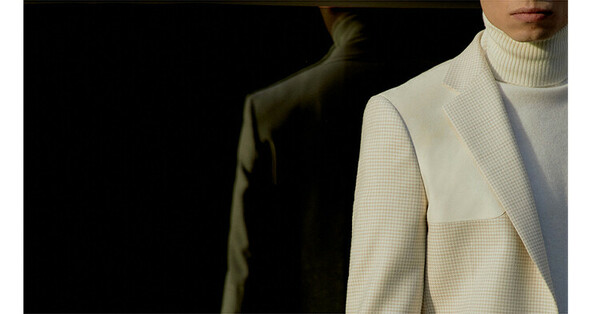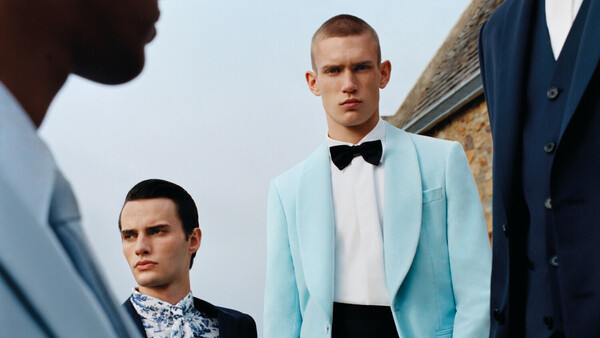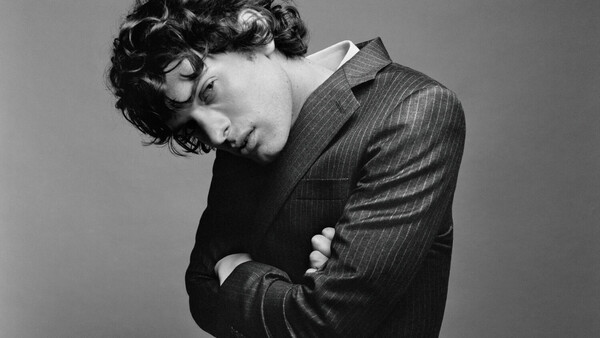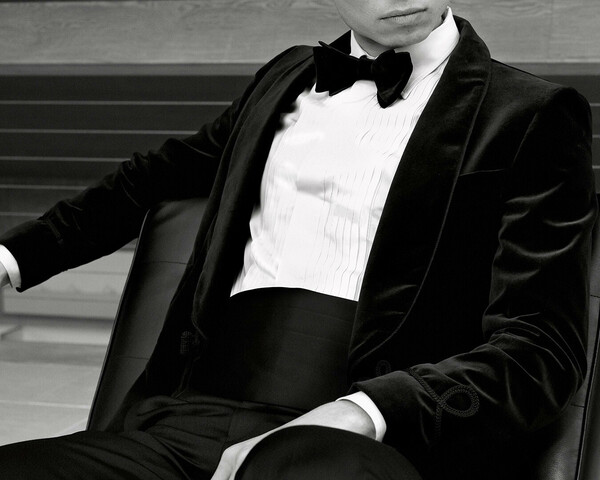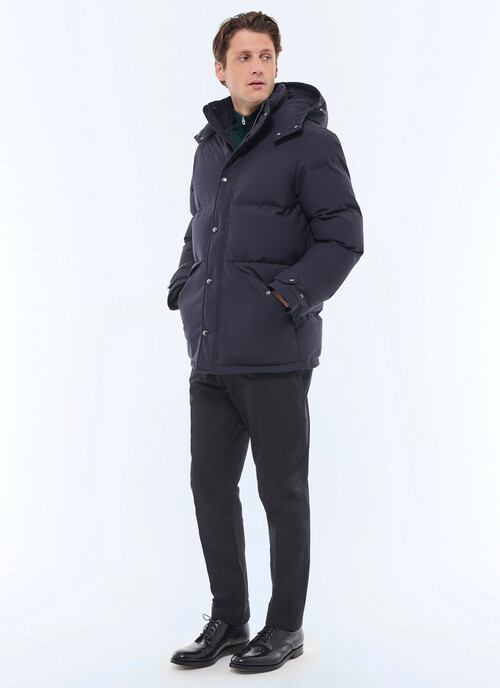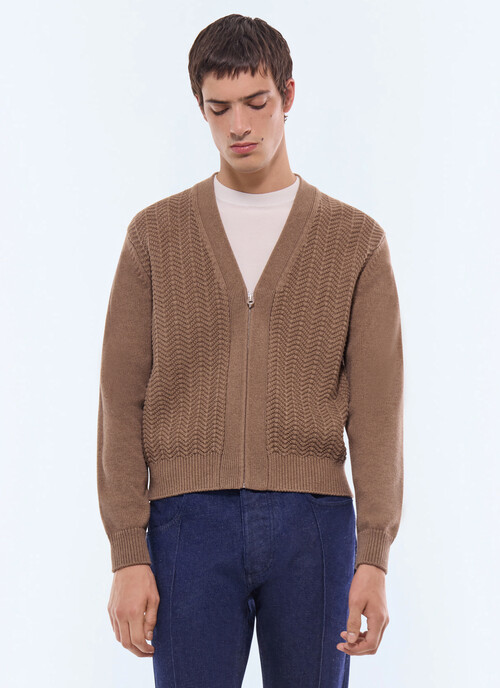The perfect shirt
The different shirt fits allow you to play with styles, but also to find the right piece for your body shape.
The three main fits at Fursac are:
The dress or formal shirt: the body is tailored with a well-defined waist. It is worn tucked into the trousers. Different collar styles are available: French, hidden placket, bib front...
The casual dress shirt: the body is slightly looser with a still noticeable tapering. It can be worn tucked in or untucked. The fabrics offered are more casual.
The casual shirt: the body is straight with a less defined waist. It is available with a shirttail or straight hem with side slits. It can be worn tucked in or untucked.
The collars
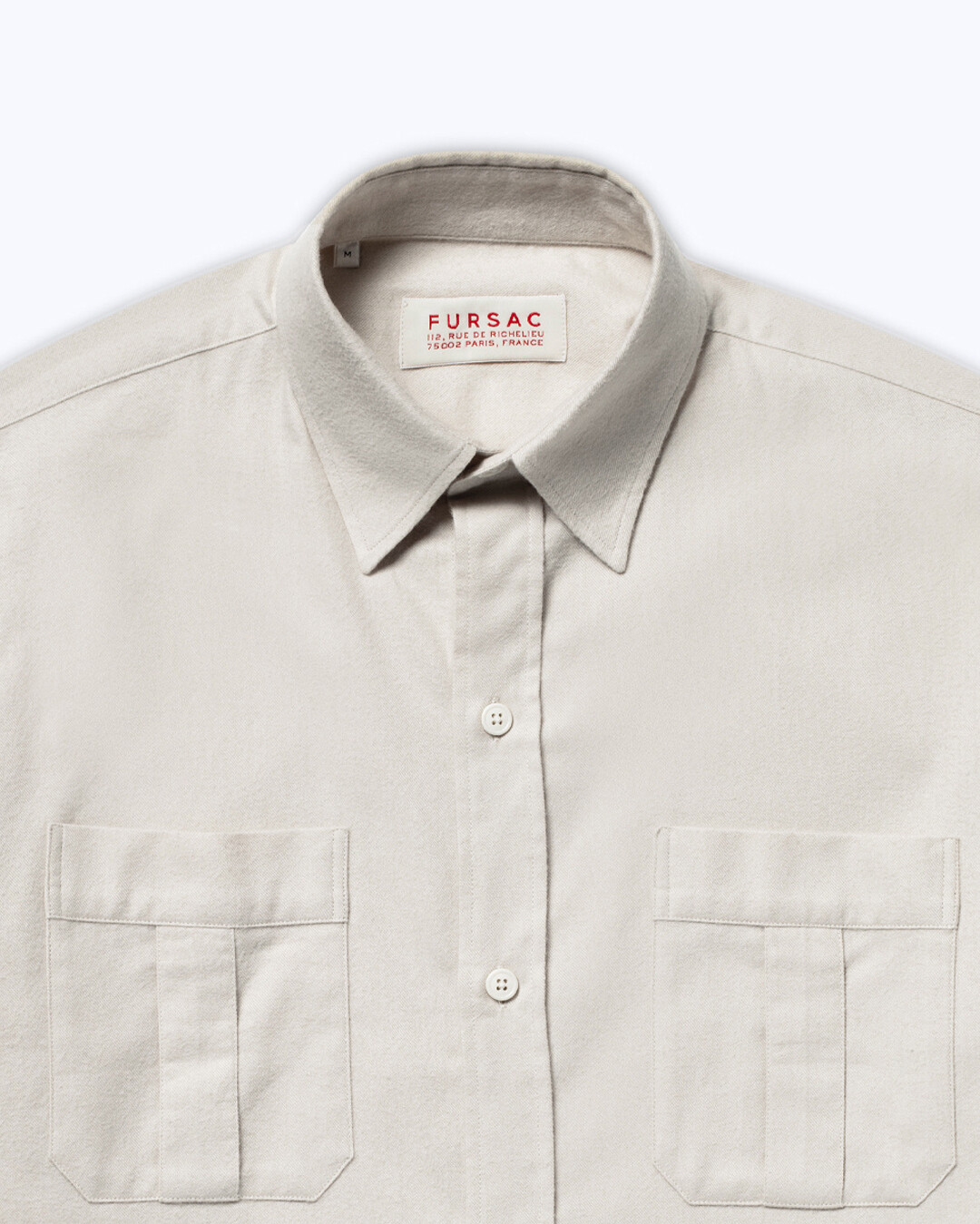 French collar
French collar
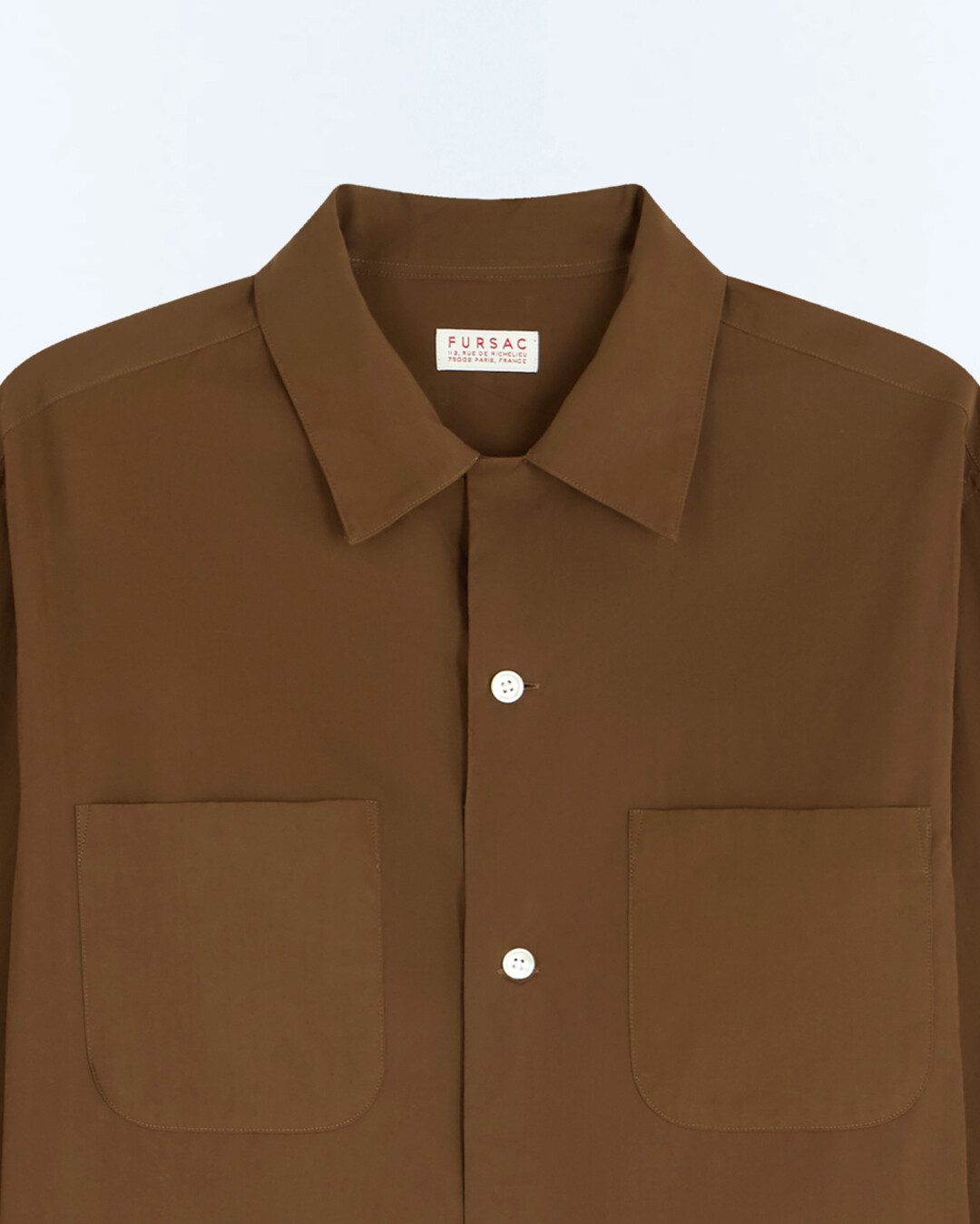 Spread collar
Spread collar
 Grandad collar
Grandad collar
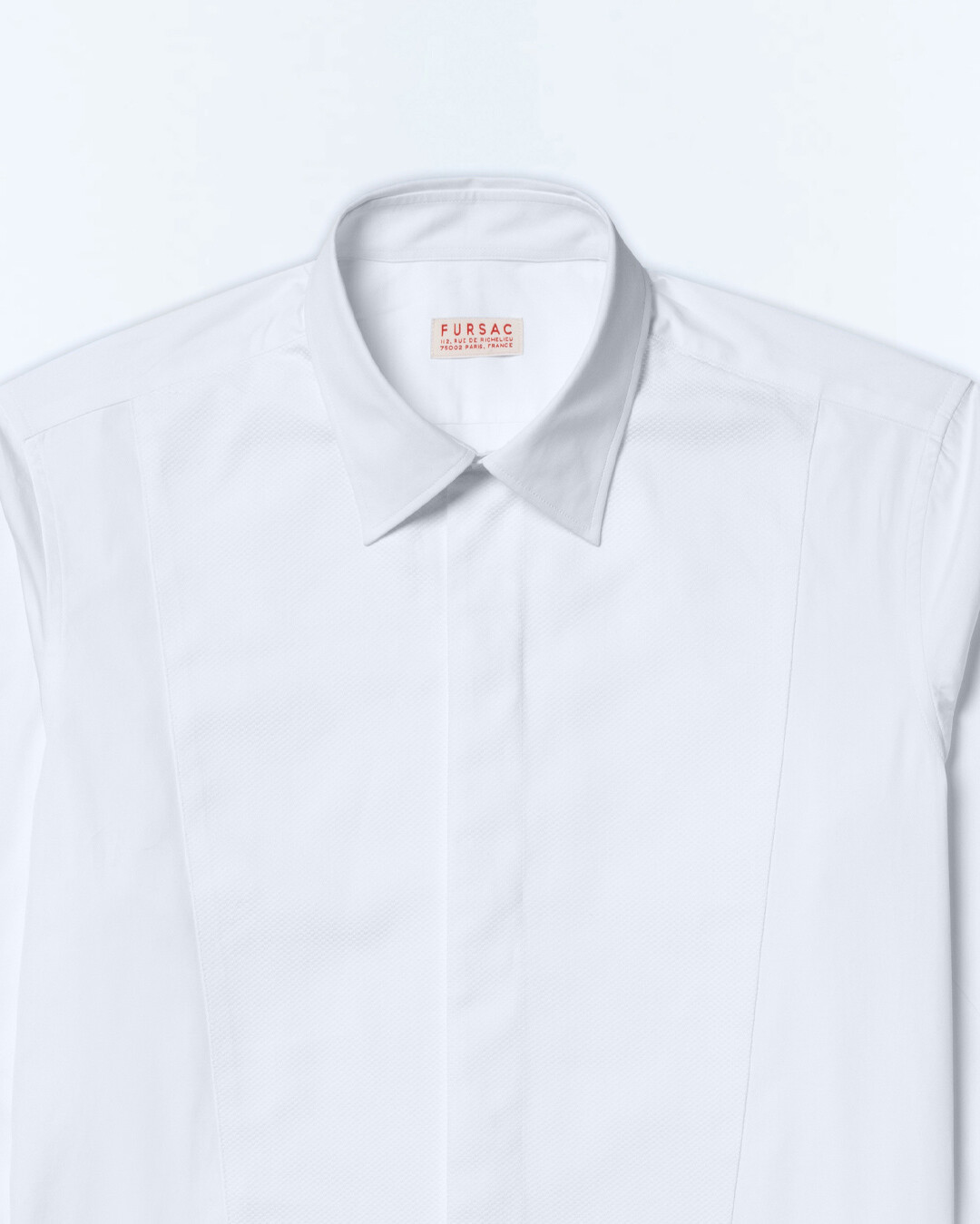 Wing collar
Wing collar
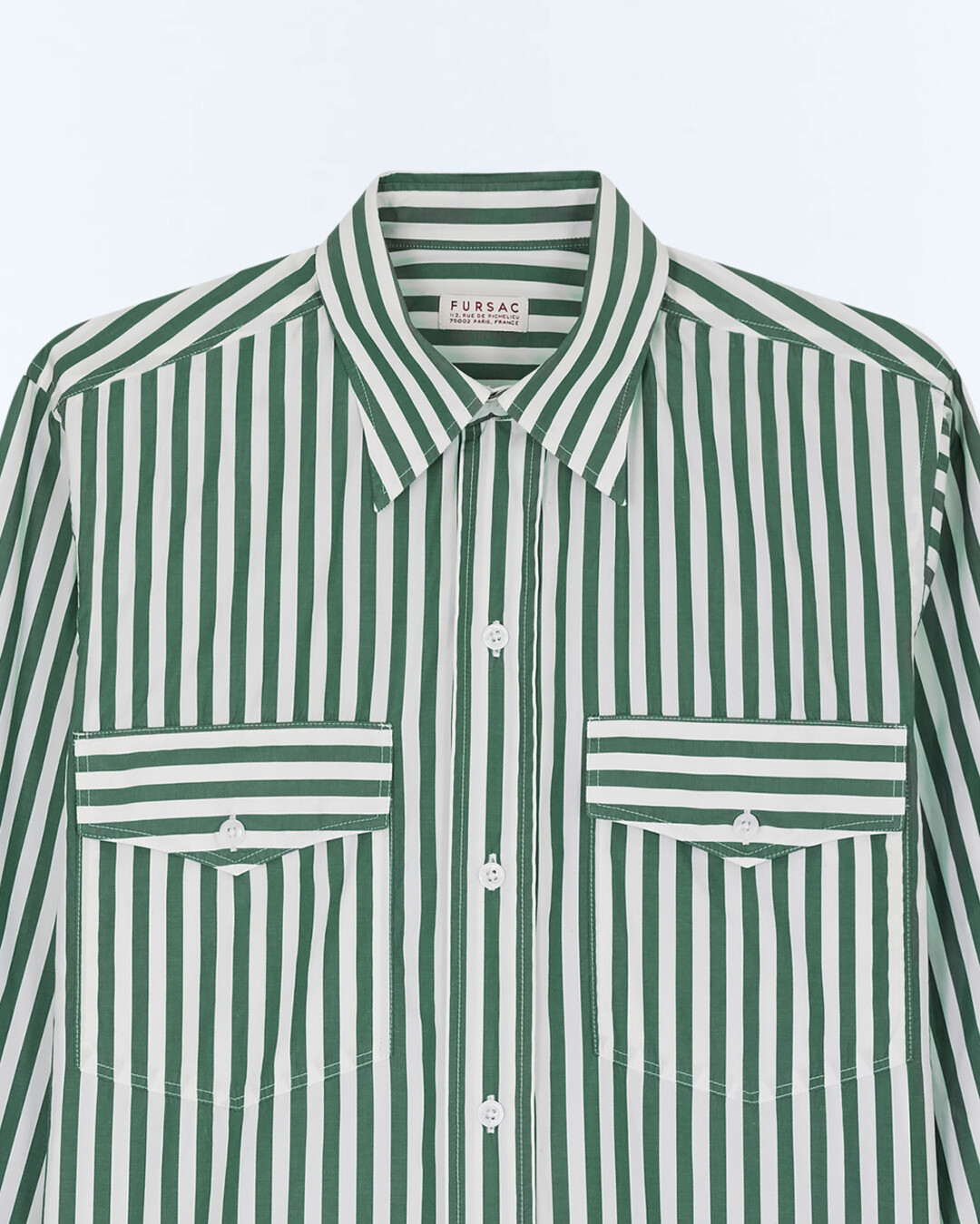 Swallow collar
Swallow collar
 Button-down collar
Button-down collar
The plackets
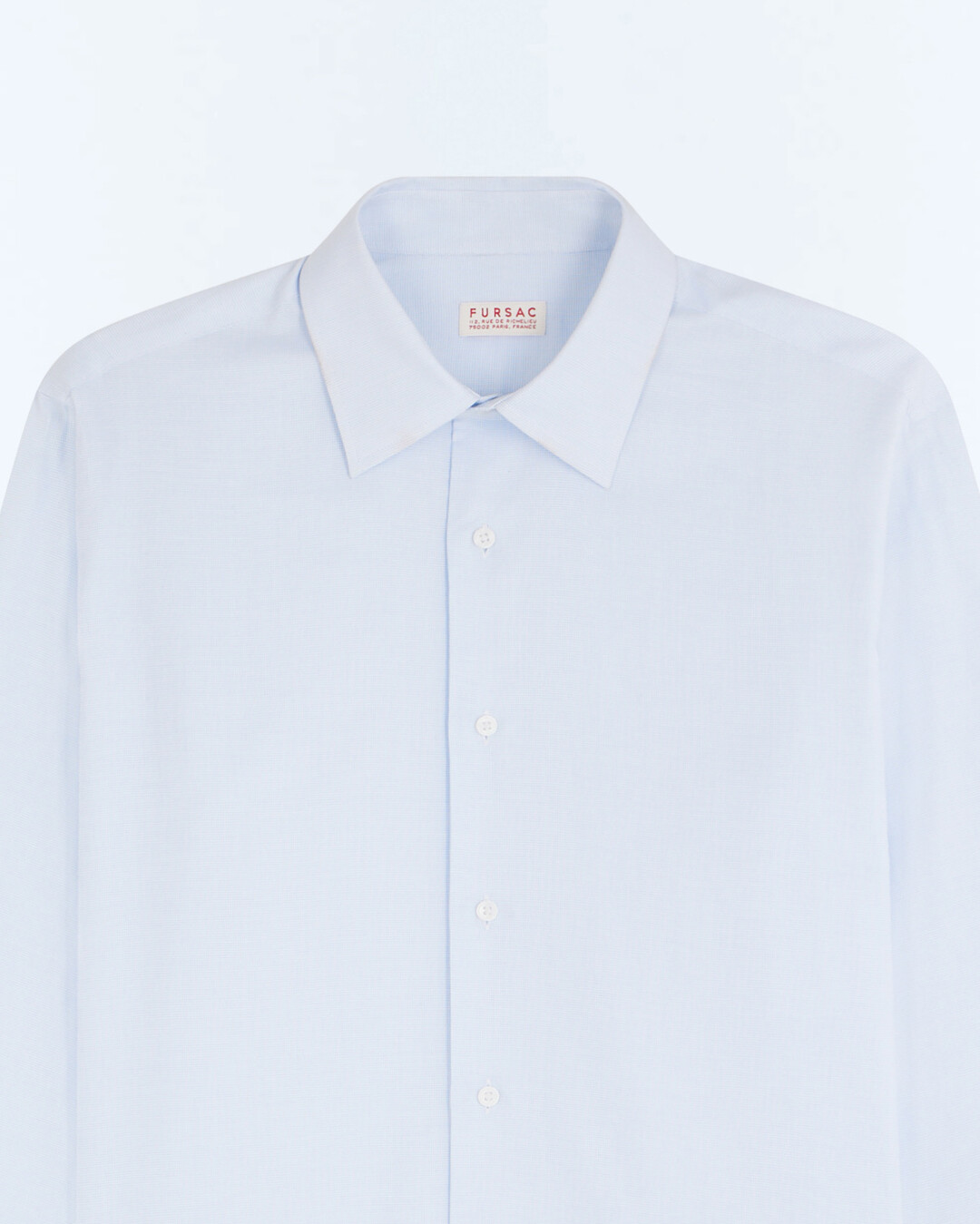 Simple placket
Simple placket
Self placket with buttonholes, visible buttons
 American placket
American placket
The most casual, with a stitched-on placket
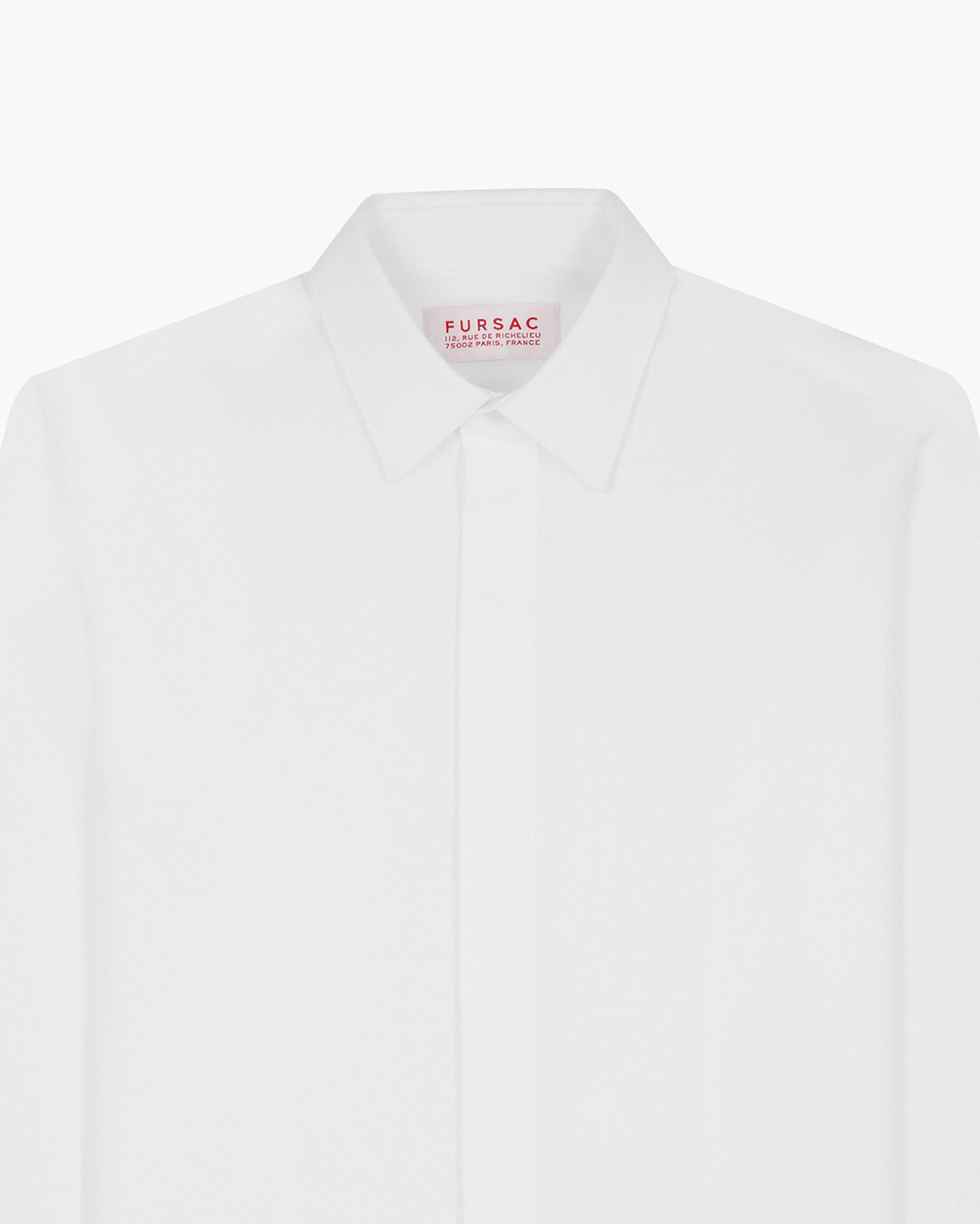 Hidden placket
Hidden placket
Hidden buttons
The cuffs
Sleeve bottom: French seam
The French seam is used to close the sides and sleeves of a shirt without visible overlocking, unlike a traditional double-needle construction.
It is made using a single-needle machine and requires the seam to be sewn twice.
This is a more luxurious finish that requires a higher level of craftsmanship.
Fabrics and dyes
The twill
Twill is the English name for the "sergé" weave. It is easily recognized by the diagonal lines created by the weaving pattern.
These diagonals are formed by the warp thread passing alternately under one weft thread, then over two weft threads.
Twill shirts are wrinkle-resistant, durable, and easy to iron.
They are also softer and often less stiff than poplin shirts.
Poplin and end-on-end
Poplin is a plain weave fabric with a fine, tightly woven rib. It is absorbent, soft, and slightly silky.
To produce poplin, weavers use a finer warp thread than the weft thread.
End-on-end is a type of poplin distinguished by the use of different colored threads for the warp and the weft. This weave is used to produce solid-colored fabrics and gives the material its characteristic heathered or mottled appearance.
Garment-dyed
A garment is said to be garment-dyed when the dyeing process takes place after it has been fully assembled.
This results in a softer, more casual color finish, especially around the seams.
It also allows for working with very vibrant colors while avoiding a harsh or overly bright appearance.
The cuts
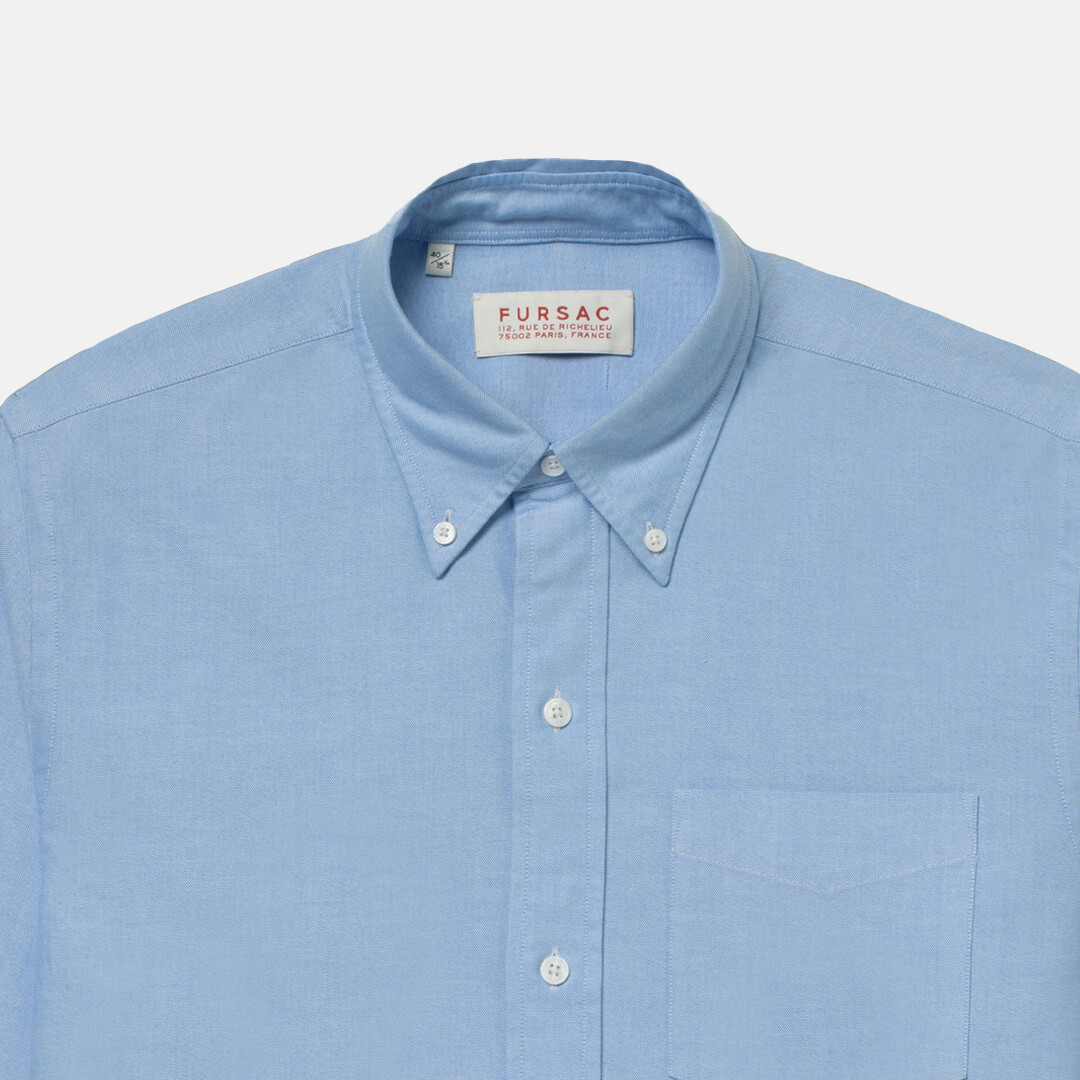
Shirt with button-down collar
Although the origins of the polo collar shirt are somewhat unclear, historians generally agree on a date… and a sport.
Let’s go back to the 19th century in the state of Manipur, in northeastern India, where British army soldiers were stationed. To pass the time during their breaks, they played polo. At the time, they wore thick, long-sleeved cotton shirts.
Bothered by the shirt collars flapping in the wind as they galloped, they decided to button them down.
This button-down collar shirt, forever linked to the game of polo, came to be known by English speakers as the polo shirt.
During a trip to England, John E. Brooks, grandson of the founder of the American brand Brooks Brothers, attended a polo match. Inspired by the players’ buttoned-down collars, he brought the idea back and introduced this collar style to the public.
So while the button-down collar shirt is often seen as a staple of American style, we actually owe its popularity to Brooks Brothers, the first brand to make it a common, everyday garment.
Hawaiian shirt or Aloha shirt
The Hawaiian shirt, or Aloha shirt, is a short-sleeved shirt with a spread collar, originating from the Hawaiian Islands. It rose to fame after the war and again in the 1980s.
Although uncertain, the origins of the Hawaiian shirt date back to the late 19th century when Japanese immigrants arrived in Hawaii to work as laborers in the sugar cane fields, bringing with them the traditional tapa fabric.
These workers, often shirtless in the fields, were required by Christian missionaries to wear cotton shirts with mother-of-pearl or coconut buttons, called palaka shirts, to which local flowers and decorations typically found on kimonos were added.
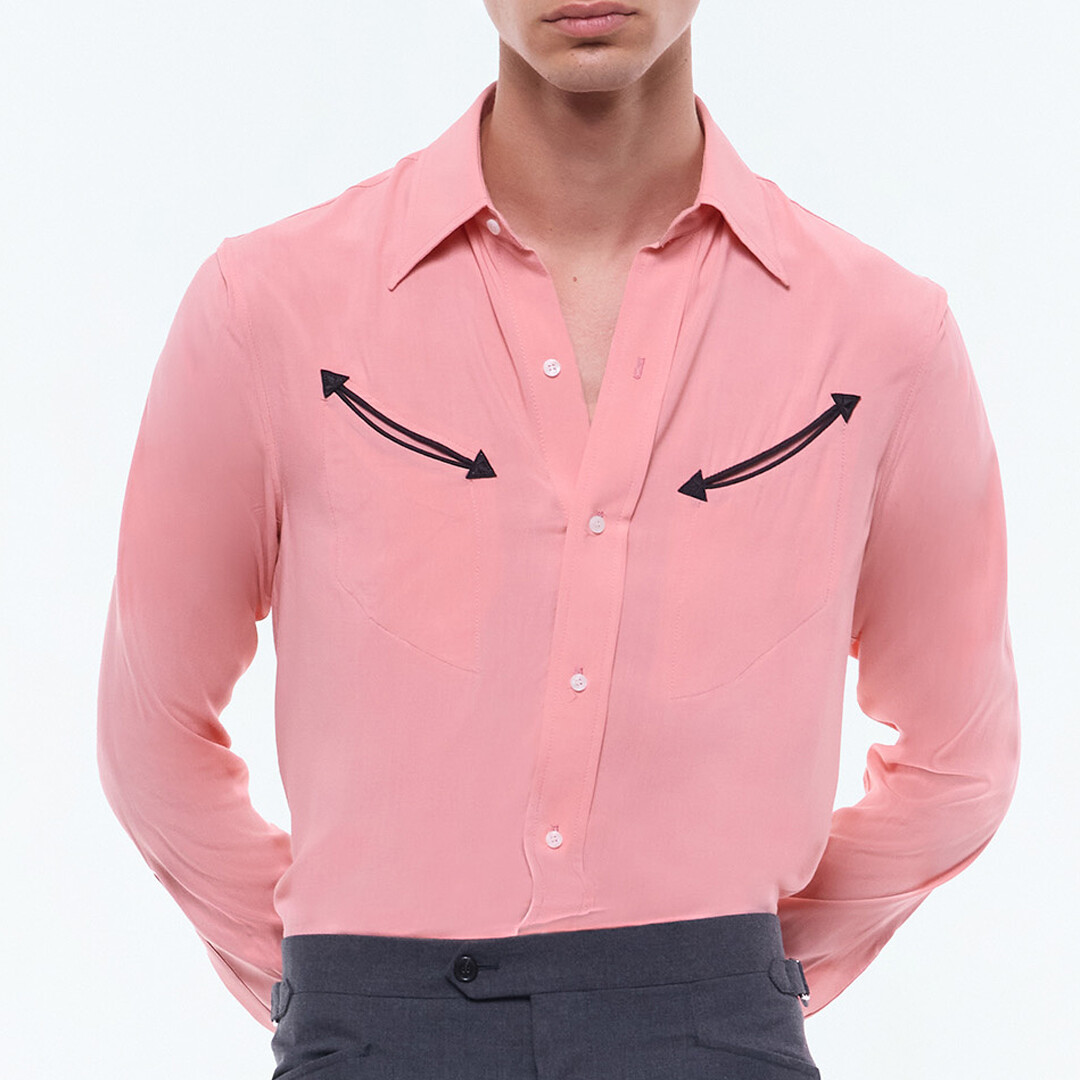
Western shirt
The western shirt appeared in the early 19th century, during the era of the American Westward expansion. The outposts that hosted settlers were cosmopolitan hubs, creating a cultural mix that gave rise to the first western shirts, the result of this blending. Inspired by traditional Mexican shirts worn by vaqueros (made of silk or very light cotton) and the combat shirts worn by Confederate soldiers during the Civil War, American settlers—future cowboys—quickly adapted these shirts to their lifestyle.
To meet the need for durable and comfortable clothing, western shirts were made from heavy denim, the same fabric used for jeans. They were also adapted for horseback riding: classic buttons were replaced with snap buttons to prevent tearing in case of a fall; shoulder yokes provided better garment support; and the shirts were made longer so they wouldn’t come untucked while riding.
From a decorative garment rich in embellishments, the western shirt became a true workwear piece—robust, simple, and affordable. Early western shirts were still embroidered with Mexican and Native American-inspired motifs. Pockets, shoulder yokes, and sleeves were often piped, usually with contrasting fabric. Buttonholes featured up to six aligned buttons.
And to be precise…
Stays: Originally, stays were horny lamellae coming from whale baleen. Previously used to stiffen certain garments, notably corsets, they are now found in the collars of shirts. Be careful to remove them before washing!
The swallow: A poetic name for this small triangular piece of fabric, also called a gusset or reinforcer, which strengthens the seam assembly on each side of the shirt hems and adds a touch of charm to the finishing.
The capucin placket: The capucin placket (or button placket) is located at the sleeve hem, near the cuff. It adds an elegant and functional touch to shirts. Above all, it helps reinforce the sleeve opening for a quality finish.
